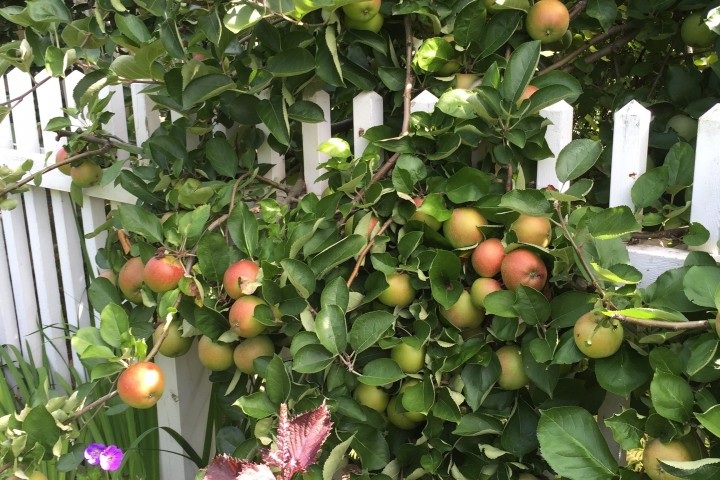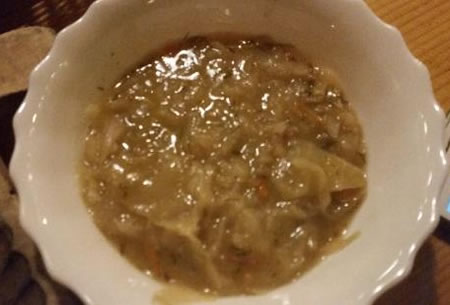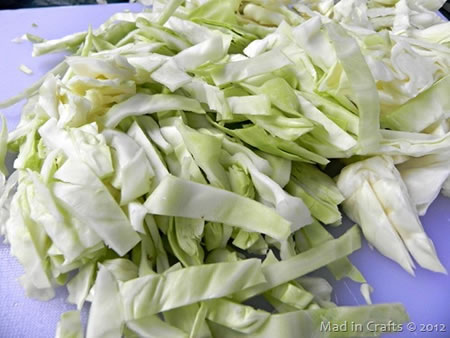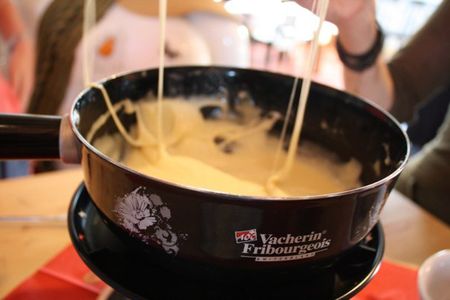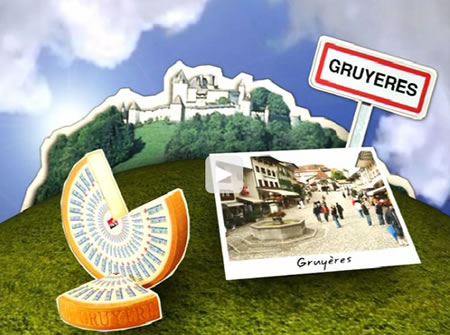From Winter
Newtown Pipin – The Real Big Apple?
We purchased a house off Shinnecock Bay on Long Island half a lifetime ago. The house was recommended to us by a friend in the dead of winter. You could barely see the formal flower beds but the fruit trees and the Long Island cedars soared over the cover of burlap and snow. The house itself was not even open for us to see. It was small and clearly an accessory to the garden. We were told it was “quite the find”….and yes, I have to say it was.
My Mother’s Cabbage “Kapusta” Soup
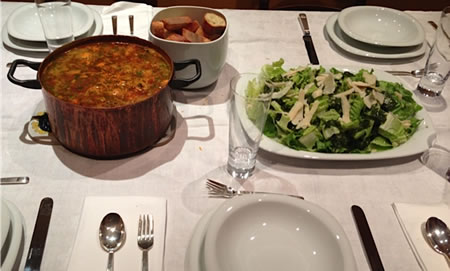
As far back as I can remember, my family has celebrated Christmas Eve with the traditional Polish custom of a fasting meal of 12 fish before the celebration of Christmas Day.
My grandmother would set out a white table cloth and make a simple meal of fish cakes, fried flounder, cod, boiled shrimp, broiled scallops and herring. There was always a bowl of rich and delicious eggnog that we would consume in huge amounts, not being at all concerned with calories or cholesterol. I can still smell the fragrance of the nutmeg that my grandfather grated over the tops of our small hands holding tightly to the dainty punch bowl cups.
As we grew into teenagers, my brother and I brought our friends, boyfriends, girlfriends, spouses and even our in-laws to my mother’s Christmas Eve feast. My mother always made a traditional cabbage soup with Polish dried mushrooms. They were costly and I remember my Aunt Bertha bringing back a suitcase full of these particular mushrooms from her trips to Poland until the Chernobyl disaster exposed the mushrooms – and all vegetation for that matter- to high levels of radiation. That was that year my mother switched to Porcini mushrooms and although it wasn’t quite the same – the meal was pronounced “humble “ by my father and our humble holiday feasting commenced.
No matter what happens throughout the year, my brothers and I try to honor my families tradition. My mother still makes her cabbage and mushroom soup and brings it to my home for Christmas Eve dinner. I have made poach salmon, shell fish lasagna and even bouillabaisse in past years stretching the feast of 12 fish to 16 or 18 fish. But in the end it is a “humble” meal and a cod fish dinner with a bitter green salad and a bowl of cabbage and mushroom soup is our family tradition. As I set the table, my brother would sneak up on me and mimic my father’s voice, pronounce our feast a “Humble Meal”, and then dinner can begin.
Here is a Recipe for my mother’s Cabbage and Mushroom soup. It is a wonderful healthy soup and very easy to make. No fat, gluten free and positively delicious.
My Mother’s Kapusta Soup
Ingredients:
2 Small head’s of green cabbage
12 cups vegetable stock or vegetable bouillon
6 to 8 oz Dried Polish Borowik Mushrooms – Dried Porcini or Shiitake can be substituted
1 16 oz Bag or jar of sauerkraut.
Parsley Optional
1) Rehydrate the dried mushroom by pouring hot water over them and letting them rest for 20 to 30 minutes
2) Shred the cabbage either by hand or in a food processor.
3) Heat the stock or bullion in a large stock pot – bring to a boil.
4) Add the cabbage and simmer
5) Remove the mushrooms from the rehydration water and put them in the stock pot
6) Pour the rehydration water or mushroom “juice” thru a fine strainer to remove the grit and add this to the stock pot
7) add the package of sauerkraut to the stock pot
8) Let all ingredients simmer for 45 minutes until the cabbage is tender.
9) Season with salt and pepper to taste.
10) And if you would like to add a bit of chopped parsley or thyme that would be fine. Although My mother would not feel the need to!
My Bliss Point – Upside Down Cake
 My Sunday was sideswiped by the cover article of last weeks NYT magazine, “The Extraordinary Science of Addictive Junk Food” by Michael Moss . A fascinating expose of how large food brands seduce our senses with fast, easy to prepare (or pack, as in the case of Lunchables ) engineered “food”.
My Sunday was sideswiped by the cover article of last weeks NYT magazine, “The Extraordinary Science of Addictive Junk Food” by Michael Moss . A fascinating expose of how large food brands seduce our senses with fast, easy to prepare (or pack, as in the case of Lunchables ) engineered “food”.
Building a product that tests high and bringing consumers to their “Bliss Point” is the goal. Addicting them to fat, sugar and salt is how you measure success. Consumerism at it’s best and maybe most dangerous. But sales soar and brands grow. I don’t usually stand on a soap box pontificating about the horrors of engineered food. We all are lucky enough to make choices, and so much of success in life is about good choices. If you have the time I would recommend that you read this article.
But what is a real life “Bliss Point”?
We all have blissful food memories – a Sunday supper or home baked pies, an insane burger or a perfect Maraschino-cherried Manhattan at a cozy bar.
For me, it was my mother’s sunday roast beef dinner. When it was a “special” dinner, it was always followed by a magical pineapple upside down cake that filled the air with the scent of caramelized sugar and tropical fruit.
The cake was a visual delight – plotted rings of pineapples stuffed with bright red maraschino cherries. There was something so exotic and wonderful about the smell of pineapple and caramelized sugar with a suggestion of cinnamon. The drama of turning out the cake was always a theatrical moment with lots of fuss and bravado. The pan was flipped on a dinner plate revealing the glorious design of the pineapple rings. The burnt sugar glaze dripping down the side of the soft white cake. The gesture of the flip was usually reserved for my father – as it took some strength to flip the hot pan and not drop the dinner plate as the cake surrendered. If we were lucky, my mother would serve it al la mode with a scoop of vanilla ice cream. And yes, to my 10 year old experience it was it was perfectly blissful.
My recipe is adopted from my mother’s with a bit more bravado than even my father could achieve. I chose to substitute star fruits for the pineapples and I added bananas and blood orange marmalade along with cardamon and nutmeg to the cinnamon and vanilla. I really changed the recipe – to enhance my adult bliss. But you can add and subtract as your own flavor profile suggests. I tried this out at a casual saturday night dinner when Sean & I had invited guests. Lets just say it fast and easy to prepare – the perfume of the citrus and spices filled our home and the theatrical flip of the upside down cake was not wasted on Stephen who adores an operatic gesture at the Met or where ever he can find one.
A Cold Winter’s Night Star Fruit & Banana Upside Down Cake with Blood Orange Marmalade
Ingredients:
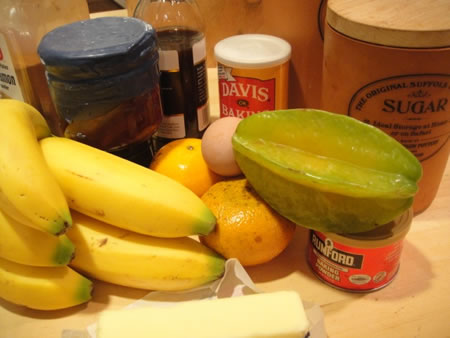
1/2 cup blood orange marmalade – we use Josephine’s feast! Fine Cut Blood Orange Marmalade. But any marmalade will do
1 star fruit – 1/2 slices
2 1/2 cups thinly sliced organic bananas
8 tbsp. butter
1/2 cup sugar – I prefer organic, along with being healthier it has a rich warm color
1 egg
1 T vanilla
3/4 t cinnamon
1/2 t cardamon
1/4 t nutmeg
1-1/3 cups cake flour
2 tsp. baking powder
1/2 tsp. fine grain sea salt
1/2 cup milk
whipped cream or ice cream (optional)
Directions:
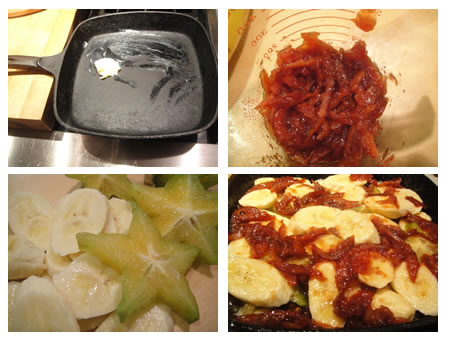
Prepare the Skillet – Slice Fruit – add Marmalade
Preheat the oven to 350 degrees.
Butter a 10 inch cast iron skillet.
Heat the pan over the stove top and spread the marmalade evenly over the bottom of the pan.
Place the star fruit in simple pattern and add the banana slices covering the marmalade – but allowing the rind to show thru.
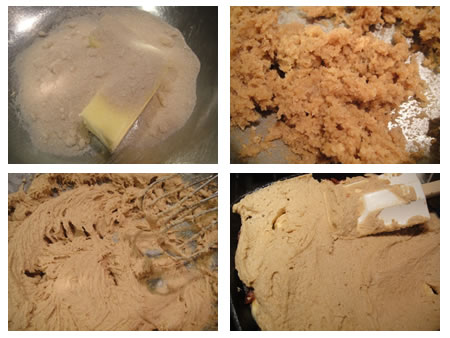
Preparing the Batter
Cream the butter and sugar together until light and fluffy. I use a hand mixer for this as my mother always did
Continue to beat while adding the egg, vanilla, and spices.
In a separate bowl, sift together the flour, baking powder and salt.
Alternately add the dry ingredients and milk to the butter mixture, a bit at a time, then stir until just combined.
Pour the batter evenly and completely over the fruit that line the skillet.
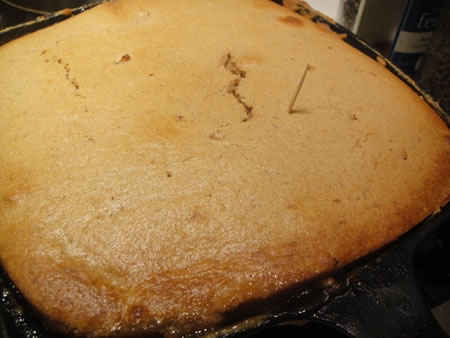
Bake for 40 to 60 minutes or until a wooden toothpick inserted in the center comes out clean.
Remove the cake from the oven and allow to cool for 10 minutes.
Loosen the cake from the skillet by running a knife around the edge of the pan.
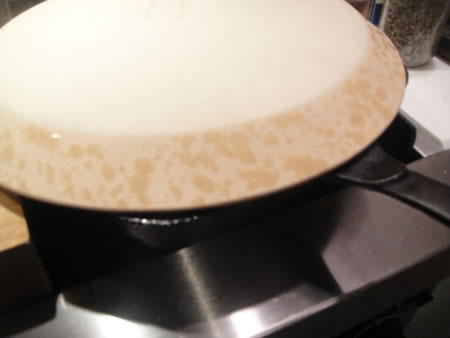
Get Ready to Flip!
Invert a serving platter over the cake and turn over so that the cake rests on the platter. Gently lift the skillet, the fruit and marmalade layer should now be on the top of the cake.
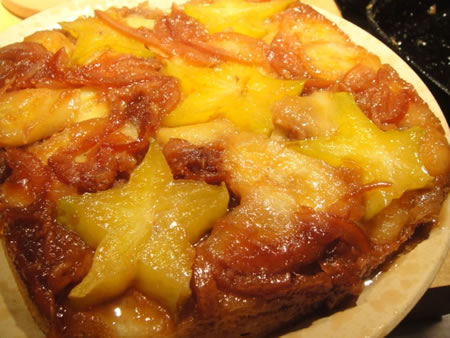
Star Fruit, Banana and Marmalade Upside Down Cake
Serve with whipped cream or ice cream if desired. But this is a beautiful cake with a desert wine by a winter fire. Serves 8 to 10.
Moitié-Moitié Fondue
Fondue Moitié-Moitié is well suited for those long winter nights or after a day of skiing while sitting in front of the fire or watching an old movie. With one pot to clean up what could be better? My brother-in-law James has a Swiss friend and colleague who has shared his family recipe for a Fondue Moitié-Moitié using Gruyère and Vacherin Fribourgeois. James makes it on Christmas Day for our family along side of his wife’s Bourbon Glazed Ham.
Fondue refers to several French Swiss communal dishes always shared at the table in an earthenware pot called a “caquelon” or over a small burner called a “réchaud”. The term “fondue” comes from the French “fondre” (“to melt”), referring to the fact that the contents of the pot are kept in a liquid state so that diners can use forks to dip into the sauce. Though cheese fondues are the best known, there are several other possibilities for the contents of the pot and what is used for dipping — recipes are not entirely fixed and vary depending on the cook.
Making fondue is easy – a heavy pot is best, either enamel or cast iron. And as always the better the ingredients the better the result. We were instructed to use Vacherin Fribourgeois & Gruyère and were told it is better to ask for “the “cave-aged” Gruyère as it is only slightly more expensive than the regular one, but it has a much better taste.
Traditional Moitié-Moitié Swiss Fondue
2 cups Dry White Wine (one cup per person)
2 cloves Garlic – finely minced
1 T Cornstarch
1/2 lb Vacherin Fribourgeois & 1/2 lb Gruyère – grated
1 to 2 T Kirschwasser
1 to 2 Baguettes – cubed
Rub the inside of the pot with the two cloves of garlic and place the pot on a medium flame adding 2 cups of the wine and the cornstarch. Blend with a spoon or whisk.
Add the grated cheese and stir consistently until all the cheese has melted and the fondue is smooth. You may want to lower the heat a bit – to keep the cheese from scorching. For safety, remove the pot from the flame and add the Kirschwasser. Stir. Return to the flame and cook to the correct thickness.
The fondue is fully cooked when it is thick enough to coat the back of a wooden spoon – if it is too thick add more wine and continue to stir.
Serve in a fondue pot with cubed bread on skewers – a baguette would be perfect but any good loaf of crust bread would do.
Half the fun of the fondue is in the eating – a glass of dry white wine – preferable chilled is the traditional accompaniment – although a good winter beer is also nice. In a perfect cheese fondue, the fondue mixture is held at a temperature low enough to prevent burning, but hot enough to keep the fondue smooth and liquid. Ideally, when the fondue is finished, there will be a thin crust of toasted (but not burnt) cheese in the bottom of the caquelon. In French, this is commonly referred to as ‘la religieuse’ (“the nun”).
Often a snifter of Kirschwasser is served alongside the fondue – bread dipped in a touch of kirsch just before it is dipped into the fondue pot warms the spirit as well as the heart. And it is important to continue the Swiss tradition of the “dropped” bread. If bread is dropped into the pot – you must kiss someone at the table for good luck. This could be fun but optional depending on the company you keep.
A List of Traditional Swiss Fondues:
Fondue Neuchâteloise: Gruyère and Emmental
Fondue Moitié-Moitié: (half-half): Gruyère and Vacherin Fribourgeois
Fondue Vaudoise: Gruyère
Fondue Fribourgeois: pure Vacherin Fribourgeois (often served with potatoes instead of bread)
Fondue de Suisse centrale: Gruyère, Emmental and Sbrinz
Tomato Fondue: Gruyère, Emmental and crushed tomatoes in the place of wine.
Spicy Fondue: Gruyère, red and green peppers and chilli
Mushroom Fondue: Gruyère, Vacherin Fribourgeois and mushrooms
French Fondues:
Fondue Savoyarde: Comté Savoyard, Beaufort, and Emmental.
Fondue Jurassienne: pure mature and normal Comté
Italian Fondues:
Fonduta: is prepared in the French-minority region of Aosta valley in Italy, and employs Fontina, milk, eggs, and truffles
What to Cook when the Snow Falls and the Wind Blows.
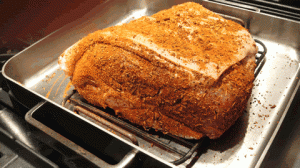 I am always inspired by traditional cooking in the winter. The forecast of snow and the wind chill factor well below freezing has me yearning to slow roasting something wonderfully fragrant.
I am always inspired by traditional cooking in the winter. The forecast of snow and the wind chill factor well below freezing has me yearning to slow roasting something wonderfully fragrant.
Today I am cooking in a Basque tradition, a piece of pork smothered in spices and slow roasted at 300 degrees. Slow roasting has its roots in rural cooking where few people had ovens and meats were placed at the back of the fire pit, fire place or bakers oven and heated all day long. When a roast is cooked in this manner, all the luscious fats render into the meat – self basting the roast. This is a rich and delicious meal, a guilty pleasure that brings friends and family together for a memorable feast!
Seek out the best piece of pork that you can find – I have made this with a supermarket pork picnic and is is delicious . But if you are lucky enough to have an organic or heritage pork producer the result is so much better. Here in NYC I shop at the Union Square Farmer’s Market and the gentleman at Violet Hill Farms or Flying Pigs have OUTSTANDING pork. Nothing comes close in my book. The end result exceptional with heritage producers. Here is the deal, the pork is more flavorful and the fat is well – out of this world.
Pork Roast
Josephine’s Feast Pork Spice Rub
Josephine’s Feast Natural Sea Salt
Pepper
Bottle of apple cider
Preparing the meat could not be easier. Unwrap the roast. Wipe it down. Cut slices of garlic and use the sharp end of a pairing knife to create a slit in the skin and push the sliced garlic into the skin. Rub the roast with a mix of fragrant spices – in my opinion , paprika is key, mustard, cumin, salt & pepper are some of my other favorites. Some of you have no problem playing with spices – others need a formula. I’d like to recommend Josephine’s Feast Pork Spice Rub. it has at it’s base Spanish Smoked Paprika, with Black Mustard Seed, Cumin, & Garlic. The rub has no salt – just before placing the roast in the oven rub it down with natural salt – also available at JosephinesFeast.com or in your kitchen shelf
When the roast is ready for the oven, place on a rack and pour 2 to 4 cups of apple cider in the baking pan. Just enough to cover the bottom but not touch the roast.
Slow cook for at 325 for the first 30 minutes then drop the temperature to 300 for the next 3 to 6 hours.
Check the roast every hour making sure there is enough apple cider under the roast to keep it from drying out
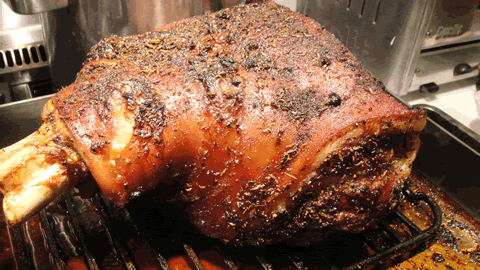 When the roast is ready the meat should pull away from the bone, there should be a crispy crust, and the internal temperature should read 160 degrees.
When the roast is ready the meat should pull away from the bone, there should be a crispy crust, and the internal temperature should read 160 degrees.
Tent the roast under foil for 10 to 15 minutes.
It is best served with roasted potatoes – I like to quarter organic potatoes – Yukon gold or other small sized spuds. Drizzle with olive oil, rosemary, whole garlic cloves, and salt. Roast in the oven with the pork for 2 hours. While the meat is resting – turn the temperature up to 350 for 15 minutes.
Garlicky greens or a wild arugula salad dressed with Balsamic vinegar and olive oil are a great addition.
As a condiment Josephine’s Feast! Apple Compote cooked with Dijon Mustard is the perfect match. Made with Organic Heirloom Apples it is a tradition accompanyment with roasted meat in Normandy.
